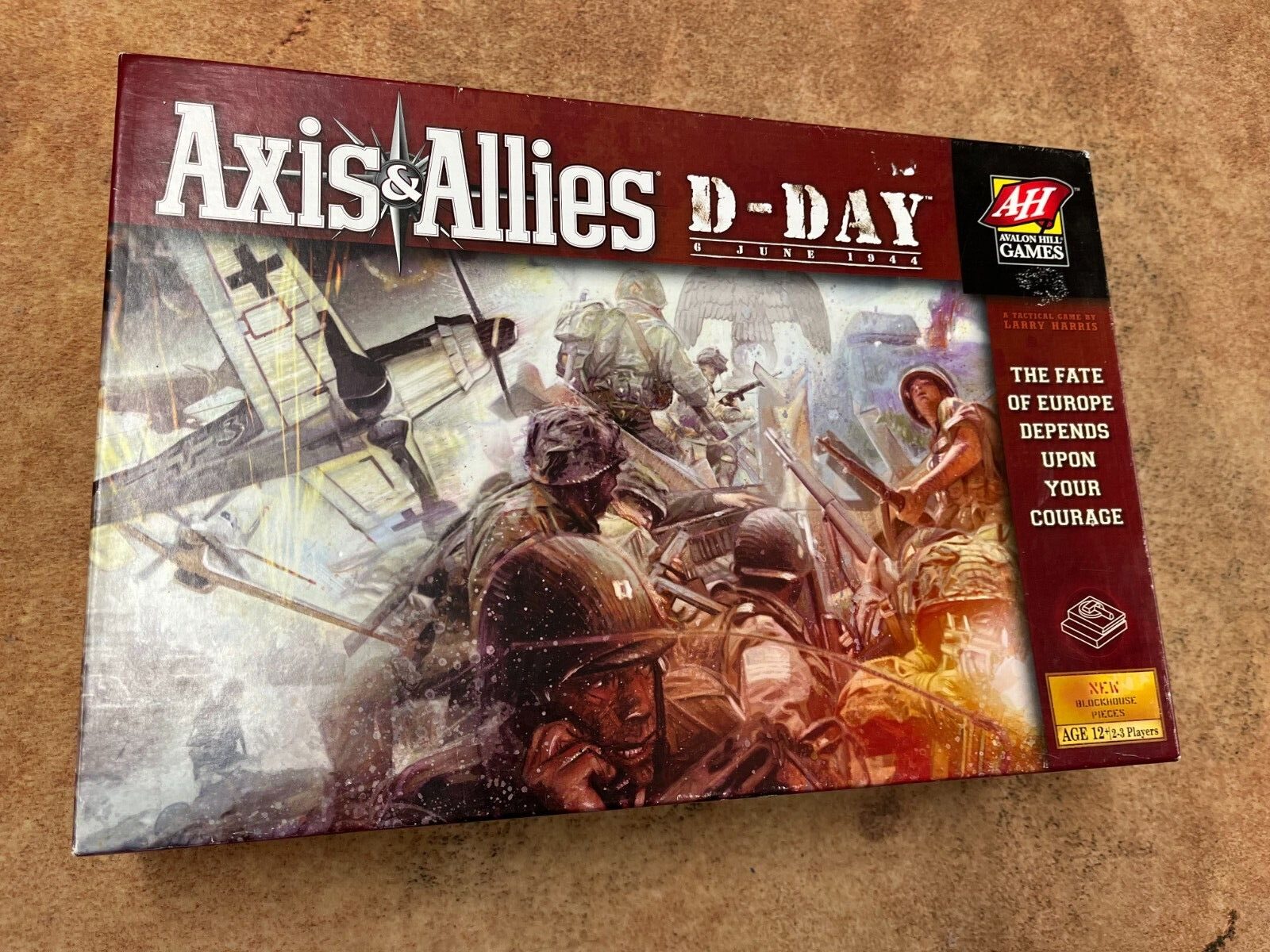Axis & Allies: D-Day (2004)
Axis & Allies: D-Day
Axis & Allies: D-Day is the fifth version of the strategy board game Axis & Allies, released on June 11, 2004, as a celebration of the 60th anniversary of D-Day during World War II. The game was designed by Larry Harris and developed by Mike Selinker. It allows two to three players to recreate Operation Overlord or D-Day scenarios during June–July 1944. The game won the Origins Award Gamers’ Choice Award 2004.
Game Components of Axis & Allies: D-Day
How To Setup Axis & Allies: D-Day
Setting up the game involves placing starting forces according to shaded silhouettes on the map. Allied forces are mainly positioned in zones off the coast, while airborne troops are placed inside Normandy. German forces are deployed on the board, particularly around key cities like Cherbourg. Reinforcement cards indicate which units will enter the game as play progresses. The setup is designed to reflect the historical deployment of forces during the D-Day landings.
Gameplay Mechanics and Game Objective
– Allied airborne assault
– Naval bombardment
– Fighters patrolling
– Antiaircraft fire
– Bombers striking
– Allies moving and landing
– Blockhouses firing to sea
– Allies and Axis attacking and defending
– Reinforcements for both sides
Player Experience
Playing Axis & Allies: D-Day offers a fast-paced and strategically deep experience. The game is designed to be quick to teach and play, with most games lasting around 2-3 hours. The use of order cards streamlines the gameplay, making it easy to follow the sequence of events. However, the game’s set objectives can lead to repetitive strategies, and the physical components can sometimes be cumbersome.
Pros
Cons
Personal Thoughts on Axis & Allies: D-Day
This game is ideal for those interested in World War II history and strategic warfare. It serves as a great introduction to the Axis & Allies series due to its simplified and focused gameplay. However, players with short attention spans or poor memory may find the component management and repetitive strategies challenging. Overall, it’s a well-designed game that offers a unique and engaging experience for history buffs and strategy enthusiasts.
We are supported by our audience. When you purchase through links on our site, we may earn an affiliate commission, at no extra cost for you. Learn more.

